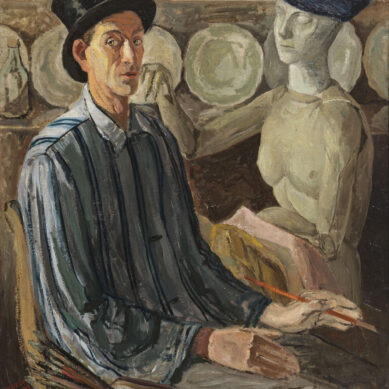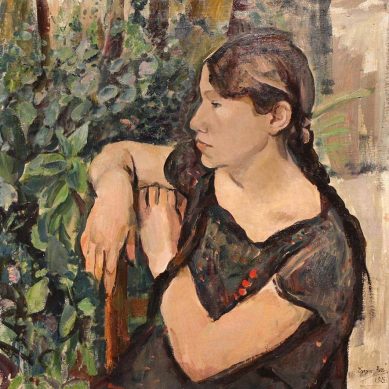You searched
Painter
Angelo Urbani del Fabbretto
Are you interested in the sales or the purchase of his artworks?
We buy works of this artist
and of other painters and sculptors from the 16th century to the first half of the 20th century
The Berardi gallery offers a free and without obligation service for evaluation of ancient and modern art . To find your way in the art market, very complex and full of nuances, it is better to rely on a professional consultant who can answer fast and concretely to your needs. The clarity of the answers will resolve effectively the need to estimate or sell an asset.
Contact us immediately without commitment
Answers also in 24 hours:
Angelo Urbani del Fabbretto
Angelo Urbani del Fabbretto
Angelo Urbani del Fabbretto was born in Rome in 1903. Best known as a theatrical set and costume designer, he worked for several years at the Teatro dell’Opera in Rome. His signature appears on numerous sets and costumes for operas staged between the 1940s and 1960s, including Tosca in 1949 and L’isola degli incanti at the Terme di Caracalla in 1962.
A painter and set designer
His painting activity, which he carried out in parallel with his theatre work, is little known but very rich. Angelo Urbani del Fabbretto’s most well-known works are small representations of masks and theatrical scenes, painted with a loose brushstroke and a very personal expressionism, as can be seen in some of his oil paintings from the 1950s, dedicated to Italian Masks.
From the previous decade, animated by an energetic and nervous drawing, by a bright chromatism and by a wavy brushstroke that seems to fully express the artist’s vitality, he also worked as an illustrator. In 1951, he was among the authors of the images for the Strenna dei romanisti, a collection of Romanesque poems in memory of Trilussa, in which he was responsible for the illustration of Monte Cavallo by Armando Fefè.
Theatre, masks and Roman popular culture
As regards his painting production, as mentioned, he is mainly attracted to the story of the theatrical world, the backstage of the show and the work in uniform, an aspect that can be seen in his most significant works, Carabinieri in High Uniform, Instrument and Costumes and Controfigures.
The first painting was presented by Angelo Urbani del Fabbretto at the Venice Biennale in 1942, while the last appeared at the Rome Quadriennale in 1948. The signature on the lower left indicates that Controfigure was executed in 1947. It probably represents Angelo Urbani del Fabbretto’s greatest period of painting, not only because of its brilliant handling of colours, but also and above all because of its suspended and allegorical atmosphere: the painter is painting himself while he is finishing the colours of a mannequin, a theatrical stand-in. The world of the spectacle is confused with the real world, involved in the painting by the painter’s gaze, who observes us and also becomes a stand-in for himself.
This expressionism veiled in almost metaphysical sensations also includes Instrument and Costumes, in which Harlequin’s attributes – the coloured rhombus suit, the black mask and the mandolin – recall an absent character, a moment of pause from the stage, where the costumes seem to take on a life of their own, independently of the actor who is supposed to be wearing them.
The name of Angelo del Fabbretto is often associated with the representation of carnival and festivities belonging above all to Roman popular culture. The nativity scene (presepe) made before 1974 and kept in the Museo di Roma in Trastevere belongs to him. As a skilful set and costume designer, the author, alongside the representation of the Holy Family, created a tranche de vie of nineteenth-century Rome, near the Vicolo del Corallo, near Piazza Navona, where this nativity scene was exhibited for a long time at Christmas.
Angelo Urbani del Fabbretto was therefore also a figurine maker, following in some ways the tradition of Bartolomeo Pinelli’s father, the famous maker of the so-called ‘puppets’ of the traditional Roman nativity scene.
Elena Lago







